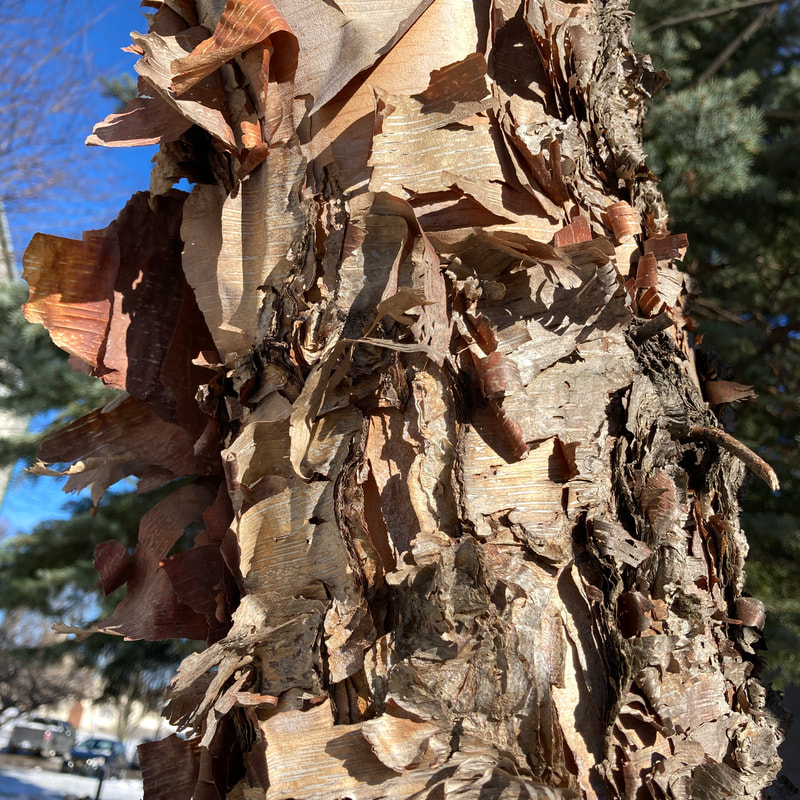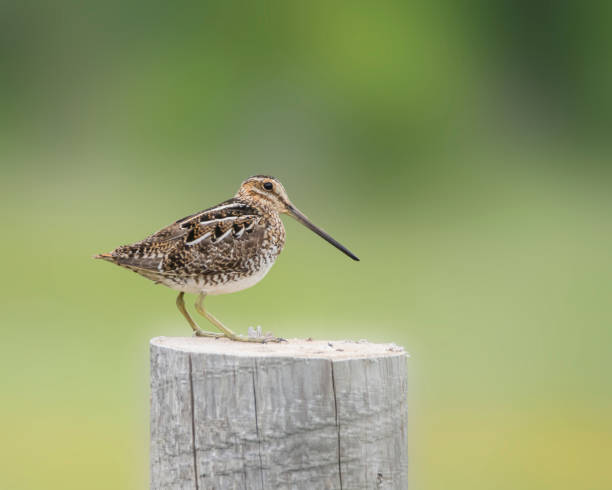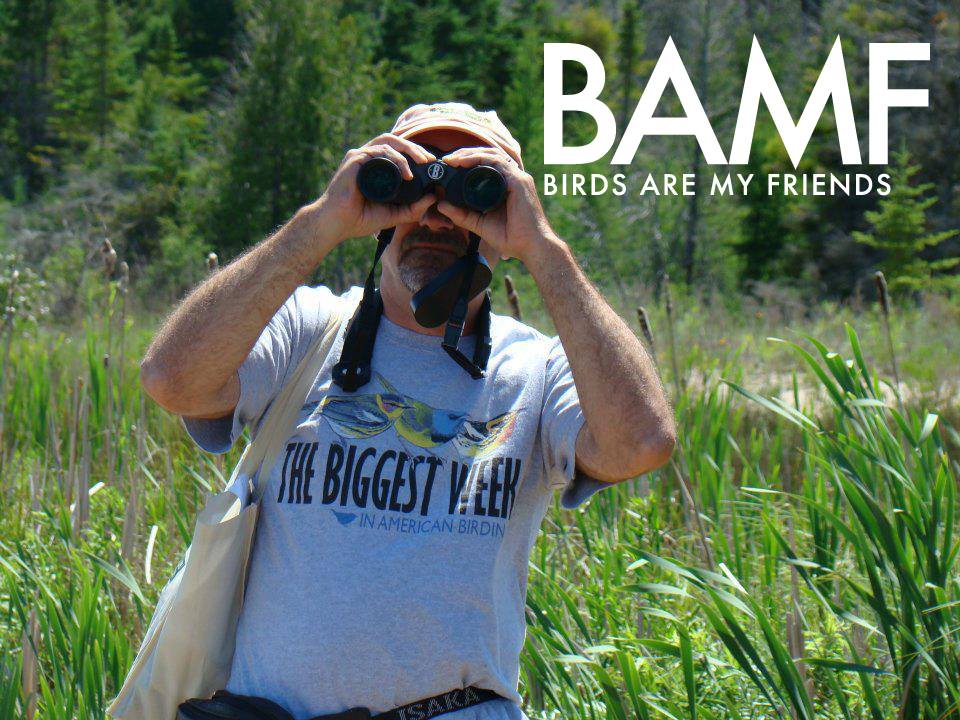|
This is the ninth in a series chronicling the efforts by Terry Grabill to follow a dream kindled by a love for birding and the inspiration drawn from the book and movie The Big Year. Previous stories in the series can be accessed by entering Michigan Big Year at Search Near North Now on our home page: https://www.nearnorthnow.com/ April 12 meant back-to-business for this middle school teacher. I'd just come off a very rewarding spring break with reasonably good weather and some great birds. A former student, Megan Thomas, had asked me early in the year if I'd be willing to take her on as a student teacher. She had been a substitute teacher for years and was wrapping up her quest for teacher certification. I didn't hesitate to agree, though I had no idea what a help this would mean for the month of May! COVID19 had made getting a sub for class very difficult. Now, once I helped her get her feet wet, I had a ready sub for carefully-scheduled doctor's appointments and personal business days. My time wouldn't be as free as some of the birders I'd met, but I had time to monitor rare bird reports and plan after-school dashes to find them. Such a day was day-one back from spring break. Early in the day, a report came from Cadillac (about an hour and a half away) of a Eurasian wigeon. I had resigned myself to having had all the North American waterfowl to be expected in Michigan and this was one of those rarities that had to be chased. After a quick call to Andrea, I was out-the-door at 3:10 headed northwest. I arrived at Hemlock campground shortly after 4:30. I was disappointed to see no cars parked at the gate. No cars meant no one was "on the bird". I'd have to find the site and the bird myself. I had read that the boat launch from which the bird was seen was some distance from the locked gate. What gear should I carry in? If I left some in the truck, just how distant was the site from the gate? could I get back for optics left in the truck without risking losing the bird? I slung the scope and tripod over one shoulder, put my bins and digital SLR on my neck, and carried the big telephoto lens. I could trade the scope out from the tripod and put the big lens on if needed. That march to the site was long, or at least it seemed that way. By the time I gasped my way to the boat launch, I was winded and sweaty. I was met by a trio of Amish teens, each carrying $2500 binoculars and a $3000 scope. "We've been here twice today and can't locate the bird!" Exactly what I DIDN'T want to hear. They shouldered their scopes and mounted their bicycles explaining that they were going to bike around the lake until they found it. So I set up my tripod and scoped all manner of water birds. Lots of American wigeon, with green necks and white crowns, along with dozens of pied-billed grebes, were scattered across the boat-launch inlet. Connected to the east was the very large Lake Mitchell. If the target bird was out in the big lake, good luck getting eyes on it! Sunset was a long way off. I had time to wait. I studied each bird on the water over and over. Then came the hungries...or, more correctly, the hangries...Do I leave the set-up and go get some food? What if the bird comes while I'm gone? Better lug all the equipment back to the truck, scope a bit of the lake, get a snack, and buckle down at the boat launch. As dusk approached, the glare looking west over the cove was blinding, making it hard to make out colors well. Still seeing only AMWI, green and white. Every ebirder I knew had been in this very spot that day and had very nice pictures of a wigeon with a rusty red neck and a buff crown. Not Me! With melted chocolate hands and warm Pepsi, I continued to scan the glare in hopes of... wait...THERE! Rusty necked and buff crowned, the bird looked like it was surrounded by a halo created by the setting sun! I turned and marched to the truck. #164 Eurasian wigeon April 14. After watching Megan work through the first couple of class periods, I opened ebird to scan for rarities. Wow! The Long-eared owl in Jackson was still showing! I have no idea why I hadn't tried for it on our way home from Pte. Mouille. I assumed I had missed it and it had migrated north. Jackson is an hour farther from home than Cadillac but light was with me until 8:00. After the wigeon stake out of two-days prior, I accepted that I may be driving home in the dark. Report was something like "go to the baseball field (by the museum) look for the green fence and large conifers. The last-few-minutes anxiety struck as I entered the park with its multiple ball fields and expansive trails. So, I assumed, the wild-goose-chase was on. I continued following the navigation pin to a large, empty parking lot. To the left was a museum, that's convenient! Ahead of me was a ball field, complete with a green fence. Lining the fence to the right stood a row of three tall Norway spruce. Under the evergreens was a path. this can't be right. This is supposed to be hard. I checked the week-old post and it all fit. But, a bird can cover a lot of ground (or air) in a week. I strapped up with my binoculars and camera and set off preparing for the worst. The path led directly under the trees, which had caused some stir on social media, many members dismayed at how close people had gotten to the owl. Well, the path was literally under the trees so I followed it. After I had passed the third tree, I turned back to where I had come from, gave the trees a very nasty look and slowly moved back toward the car, looking up into the trees as I walked. Then, not 10 feet above me, the owl carefully watched me. Easy is nice sometimes! #165 Gray catbird #166 Long-eared owl April 15. Same start to the school day. Observed Megan and the kids, then opened ebird. Holey Cow! A little blue heron in Muskegon MI? That's only 30 minutes away! Too far for a lunch-time chase. I watched as dozens of ebirders recorded the bird all afternoon. Would the after-school activity be a marathon? or a dip? or as easy as the owl? The truck was rolling out of the parking lot at 3:10 sharp and I arrived at Snug Harbor before 3:45. I found a small group stationed near the boat launch, focused on a nearby tree. I recognized one of the group as someone I had encountered a few years ago birding in Fremont. Keith asked if I was looking for "the bird". It's assumed that anyone carrying bins is there for the rarity. "It's right up there in that pine", he said. We re-acquainted and found some other FOY birds and a great view of an adult red-shouldered hawk. Keith and the others left and the heron flew down to the lakeshore offering some great views of this bird, so far from home. #167 Ruby-crowned kinglet #168 Little blue heron April 16. A visit to Fremont High School wetlands turned up #169 Northern rough-winged swallow April 17. It's a spring weekend, so we drive. I had watched ebird sightings of a seldom-seen shorebird two hours south. It had been showing for a couple of days and I figured it would be a good Saturday bird. The site turned out to be along a dead-end dirt road. Just a farmer's field with a little pocket of water that was holding some great birds. As I studied the birds, I talked with an 11-year old boy that could really handle his binoculars and scope. He digiscoped like a pro and really knew his birds. In talking with his mother, I learned that she had gotten into birds through him by driving him to sightings. I never got either of their names, maybe someone will read this and help me find them. #170 Brown thrasher (the boy's find) #171 Solitary sandpiper (two of them, how ironic!) #172 Black-necked stilt I left the pond-by-the-road to stop at MSU's Kellogg Bird Sanctuary. It's a very pretty place, but a little too zoo-like for my birding preferences. I think it would be a great place for beginning birders and kids to practice with birds that are used to company. With plenty of daylight left, I headed northwest to Zeeland and the Upper Macatawa Natural Area. I'd heard great things about this place but, again, had no idea how to bird it. It's daunting to approach a large area and have no familiarity. This facility had two trailheads. The first one I arrived at looked very suburban and tame. This wasn't the place! I raced to the north-east entrance and found very rustic trails. Were these really even trails? I took what appeared to be the path of least resistance and found myself comfortably in a large marsh on a very mushy path (if indeed it was a path). In the distance I heard the impossibly long song of a winter wren. Nearby I heard the ki-dick call of Virginia rail and the distant cry of a sora. #173 Winter wren #174 Sora I happened upon a young man there whose name I recognized from ebird posts. Lucas Timmer, obviously, was quite a birder. This day, for the first time, someone said to me, "I've heard of you! You've got a good list going!" Seems kind of childish to admit, at age 58, but that recognition gave some credence to my efforts! I left him with the Virginia rail and made my way back to the truck, passing a flock of a dozen rusty blackbirds on the way. April 18. This Sunday Andrea was with me. We'd miss Sunday service to chase another lost Florida heron, this time two hours east, at Nayanquing State Wildlife Area. Our path took us through some old, familiar places. Driving through Remus, we looked up and saw #175 Broad-winged hawk Further along, we stopped in Mt. Pleasant where my alma mater, Central Michigan University, is located. Our nephew, Brendan, is a student at CMU so we paid him a visit and then continued our journey. Nayanquing is another huge area that I had no idea how to bird, let alone find a specific, lost heron in. We arrived at an observation platform where several birders were clustered. They too were looking for the heron. It had last been seen early in the morning flying over the marsh. Great. The marsh stretched out in all directions as far as I could see. No problem...We scoped and scoured as far as we could see from the platform and got some really good birds including northern pintail and common gallinule as well as #176 Yellow-headed blackbird #177 Savannah sparrow #178 Marsh wren #179 Caspian tern I was dismayed at the thought of taking Andrea on this wild-goose chase. You see, she has debilitating back issues that prevent her riding long distances, walking long distances, and carrying much of anything. Since she had taken this ride with me, I felt terrible dipping on this rarity. I sometimes underestimate my wife. She suggested we drive to the other trailhead and see what we could find around the south border of Nayanquing. I doubted the wisdom of this idea but Andrea is tenacious. We looked at the map and figured it was a very long walk around the dikes to the southern boundary of the wildlife area. It turns out we were correct in our estimate. As we set out I recognized a lady at the trailhead from my icy walk on the pier in search of the harlequin duck in Muskegon. Jill Henemyer had our second encounter. Little did I know, it would not be the last. I shouldered the scope and strapped on my binoculars while Andrea had her bins and the camera. The trail seemed endless. Then we came to a T in the road. A quick look at the map showed we had hardly gotten started on our journey. I was overheating and my bum leg was dragging. Andrea, the saint that she is, asked if I would like her to move ahead and send a text if she found the bird. So now I'm being left in the dust by my wife on medical disability. Great. No, I was going to be with her on this. Finally, a turn to the left and we were on the southeastern boundary. Saginaw Bay was just past the row of shrubs and trees to our right, the marsh was to our left. Dozens of huge muskrats peered at us as we approached. I sat the scope up and leaned on the tripod and, as I often do, babbled on about trees, birds, muskrats, whatever... Andrea forcefully cried "Grabill, shush...look at this!" I shuffled closer and glassed the flooded tree line. "Yeah?" I asked, "what?" "Right over there, next to the egret." That was the last time I will ever doubt Andrea's ability and determination as a birder. #180 Tricolored heron We looked at the map to decide whether it would be more prudent to turn around and go back from whence we came or to journey on. The map showed we were approximately half-way, equal distance forward or reverse. We arrived back to our parked car physically drained but giddy as we explained to Jill Henemyer that we had re-found the heron and where it could be seen. Ebird showed she had sighted it, right where we had left it, an hour later.
0 Comments
Photo and article by Donna Iverson In winter, instead of scanning the ground for interesting leaves, veggies and flowers, my gardener’s eye seeks out tree bark. It brightens my day being able to recognize the trees in my neighborhood by their distinctive bark. For example, the smooth grey bark of the beech, the spiky branches of the hawthorn, the deep vertical ridges of the oak, and the peeling scales of the white birch. Recently, I encountered an unfamiliar tree with multicolored overlapping scales. It looked similar to white paper birch but it wasn’t white. A tree identification book from the library helped nail it. It was a river birch (Betula nigra), a native tree that prefers damp ground and cool shade and grows along the water’s edge ..hence its name. The river birch has multiple trunks and grows to 60 feet high with a 60 foot spread. It is a fast growing and long lived tree, reaching 75 years according to some gardening sources. It’s roots are not invasive but it should be planted at least 20 feet from any building as its roots will seek water. In the spring, it produces male and female catkins and thousands of seeds that provide food for birds. Wildlife flock to its branches, including nuthatches, chickadees, titmice, sparrows, cardinals, finches, blue jays and towhees. Squirrels love to run up and down it’s flexible branches jumping from one to the next in what looks like a wild game of chase. Compared to the bark of the white birch, river birch bark is pinkish brown not white, and peels off in much more rugged large chunks. The wood itself is knotty and weak but can be used to make inexpensive toys and woodenware like plates. The wood can also be burned in fire places and fire pits. There are at least a dozen varieties of birch including yellow birch, sweet birch, water birch, European birch, grey birch and Virginia birch. Medicinally, the river birch which is also called black birch, has been used for centuries as cures for tuberculosis, colds, sores and dysentery. All parts of the tree are used including leaves, bark and roots. But birch allergy does exist, so be cautious and eliminate this possibility before foraging. By Terry Grabill This is the eighth in a series chronicling the efforts by Terry Grabill to follow a dream kindled by a love for birding and the inspiration drawn from the book and movie The Big Year. Previous stories in the series can be accessed by entering Michigan Big Year at Search Near North Now on our home page: https://www.nearnorthnow.com/ April 3, I was anxious to get spring break birding underway. I was beginning to think I had a chance at making a real run at a respectable Big Year number and this was my chance to climb the leaderboard. I'd embraced the quest as a contest at this point and resigned myself to the tunnel-vision necessary to bird with the big boys. I was, however, Andrea's husband first so my next venture out-of-town would wait until after Easter. Saturday, the day before Easter, allowed me to add a couple easy birds around home. #141 Eastern Phoebe #142 Tree swallow April 4, Easter Sunday, Andrea and I got to her parents' home for dinner and got an early singing #143 Baltimore Oriole April 5, Time to run! I grabbed Brennan and headed South-east. Monroe County is the extreme SE county in Michigan and very unfamiliar to me. But ,if you want a list, Monroe County is a must. Point Mouillee (I'm not sure how to pronounce it) , according to ebird, was the spring treasure chest for Michigan birding. I'd looked at maps and reports and thought I'd worked out a plan of attack that would give me a chance at some much-needed shorebirds. Upon arrival, however, I found the Point much bigger than I ever imagined. Much bigger. How does one bird a place this big? Sure, there are needed birds here, but where? We stopped at an entrance and saw how vast the dike system was. The south dike jutted out into Erie and it looked to run forever. We began the walk and quickly realized that without a better plan we'd be walking endlessly in a foreign place not knowing where our targets hid. Brennan and I returned to the car to review details of sightings and discovered that many of our target species lay somewhere off a more central entrance. Where was the signage here? As we began grabbing our gear at our new point-of-attack, the cold day was turning rainy...swell... Brennan is a teenage boy. I guess teenage boys don't own rain gear. I hoped he was tough. As we began our march into the system, we came upon a drenched trio of young birders with expensive optics and rain gear. They looked like they meant business. One was older and did the talking when I asked whether the reported birds were still showing. Yes, he replied, out past the pumping station. Okay, good. The birds were there, all we had to do was take a walk and record them. That's how it's done with rare bird reports, right? This was not anything like what I'd ever experienced. I shouldered the scope, covered the bins and began the march. As we trudged along, the wind picked up as did the rain. The temperature, however, decreased. Brennan looked ahead through his binoculars and reported that a building was in sight in the distance. That couldn't be the pumping station though...could it? It looked miles away. We picked up a few new species and I listened to this cross-country track athlete grumble about the long walk and frozen hands as we resolutely continued our trek. I still hadn't wrapped by head around the size of this place as we made it to the pumping station. The dikes continued out into the lake as far as we could see. Fortunately, shorebirds were showing and that kept our determination strong. Brennan was determined to see pelicans and that meant we kept moving. The "banana" was the outer limit of Pte. Mouillee and the waters it contained were huge. We were soaked and our fingers stiff and numb from the cold. We scoped the impoundment, found our targets, turned tail and began a quick-time back to the car. The pumping station was tiny in our binoculars and realized we'd come more than two miles past it. That made about a three mile walk back to the warm, dry car. Well, at least we were no longer neophytes here and I'd be better prepared next time. #144 Barn swallow #145 Purple martin #146 American white pelican #147 Forster's tern #148 Lesser yellowlegs #149 Greater yellowlegs #150 Long-billed dowitcher #151 Pectoral sandpiper #152 Least sandpiper #153 Common gallinule Ten new species in one April day was a rush! The adrenaline made the wet and cold seem unimportant and Bren asked what was next. Attaboy! There had been a whooping crane showing for over a week one county west. No problem, off we went. I found myself relating the day to birding books I'd read. I imagined the thrill of being with Kenn Kaufman in his bare-bones year or Greg Miller, scrambling to fill evenings and weekends while holding down a full-time job. My biography in Newaygo County had not afforded me a birding mentor and I'd been in my 40s before I realized anyone did this. I was also much too practical to allow myself to chase rarities even after I knew I wouldn't be alone in the chase. Now, here I was, wet, cold, energized and ready to chase the day away. We fairly roared into Lenawee County. GPS was leading us well off any main roads to a gravel Ranger "Highway". As soon as we made the turn, there it was, big and white in a farm field about 100 yards from the road. #154 Whooping Crane Easy Peasy. What's next?! Brennan had been networking with other youth in Michigan Young Birders and had a report of a target on Rogers Highway, still in Lenawee County. Bring it on! GPS showed it at a park with a short walk from the parking location. Rogers Highway was as aptly named as Ranger Highway. What was it with Lenawee County and dirt highways? This was looking pretty residential, with sprawling lawns and long blacktop driveways. As we watched the distance to destination drop to zero we looked for a park. I was ready to settle for a place to pull over! GPS stopped us at the end of this cul de sac where two driveways led to two "mansions". The one on the right had a sign that read "We don't call 911" with a picture of a handgun. Crap...great...now what. Reasonable thought would have led to a quick U-turn and exit. But, there was supposed to be a bird I needed here so reason-be-damned. What was that that flew across the other driveway? Oh, American robin. And there? in the tree behind it? "That's a mockingbird!" Brennan yelled. Sure enough! and it had a friend! I took a couple quick photos, turned the car around quickly and drove away. #155 Northern mockingbird I returned from our early migration day exhausted but strangely energized. I had known since day one that April and May would be the make-it or break-it months. After a bit of a lull at the end of March, I had prepared myself for the single-mindedness that spring migration would bring...or, at least I thought I had. April 7, I took a quick trip to Muskegon Wastewater hoping to catch some early shorebird migrants. I found some good birds, but only one to add to the year list.. #156 Field sparrow April 8, Some quick birding at Fremont High School gave me a good list, but nothing to add to 2-21. On the way home, though, I caught an early warbler singing. #157 Yellow-rumped warbler (butter butt) I had been told when I submitted my first (errant) brewer's blackbird, that they shouldn't be expected until April, and then, they were confined to the southern counties first. I understood the concept of phenology (thank you, Ted Gostomski!) but it never really held particular meaning until THIS SPRING. Now that April had arrived, they were popping up as expected, in the southern tier of Michigan Counties. And new, finally, during spring break, a report of BRBL only an hour from home! I arrived at the celery fields south of Grand Rapids and was greeted by strong winds, wind strong enough to limit the usefulness of my spotting scope and tripod. Common grackles, red-winged blackbirds, rusty blackbirds, starlings, and Brewer's blackbirds all look virtually identical at distance through a shaky scope! After scouring the fields for an hour with binoculars, I had eliminated several birds from the search. Too much tail, grackle. black eye, RWBL Yellow beak, starling. White eye, medium tail...left only Brewer's and rusty! Look for the iridescence . Yep! # 158 Brewer's blackbird. April 10, I had visited the entrance to Muskegon State Game Area years before with my friend, Topher. I learned this day that we had stopped WAY too soon. At the end of the dirt road lay what has become one of my favorite birding spots, Lane's Landing. Past the steel gate where the road ends in a parking area is a large marsh that is magic in April. Marsh sights and sounds are captivating. RWBL were everywhere! Waterfowl of all kinds were feeding in the shallows and herons stood still as statues, waiting for a fish or frog to make its last mistake. Flying low over the cattails was a large white heron. #159 Great egret Overheard, the winnowing sound of a shy shorebird that proclaims its territory not with beautiful song or flashy color, but with a haunting sound made with specialized tail feathers! At least ten of these birds (which many believe to be a mythological animal hunted by the campfire) were dancing and chasing in a fantastic aerial dance. #160 Wilson's snipe Before home I stopped over to Muskegon Lake Nature Preserve. This is a very small area that juts into Muskegon Lake at the mouth of the Muskegon River. Some major renovations were underway and the vegetation was pretty damaged and large equipment sat ready for Monday's continued work. I did manage to pick up one new bird. #161 Yellow-bellied sapsucker April 11, last day of spring break. After Sunday service, I stopped briefly at Fremont High School and found a very early #162 Chimney swift At home I was greeted by the sweet song of #163 Vesper sparrow Tomorrow would be back to school. Chasing would be limited to after school and weekends but the birds we picked up the week of spring break gave me a taste of real chasing and a taste of what first place on ebird felt like. Photo and article by Donna Iverson A couple of my favorite seed catalogs arrived this week. As the temperatures fell and the snow arrived, looking at photos of green veggies, colorful flowers and scented herbs warmed my gardener’s heart. There are so many interesting offerings, it’s difficult to choose. In my community gardening bed, I plant a mixture of easy-to-grow vegetables, annual flowers and herbs. Recently, I learned there is a name for this: potager. Potager is the French word for kitchen garden, a place where plants were traditionally grown to add to homemade soup or “potage.” A portage is usually right outside the kitchen door and includes veggies, fruits, flowers, herbs ..anything edible and flavorful. It is pronounced po-toe-jay. A potager garden emphasizes both productivity and beauty. Attention is given to garden design, creating a patchwork quilt of flowers and vegetables that are pleasing to the eye as well as the palate. A potager can be as simple as adding flowers to your vegetable patch, or vegetables like lettuce to the flower garden. Or you could go more formal, and add pathways, raised beds, some kind of garden structure and an enclosure. Adding a few native plants would also enhance the garden’s sustainability. The potager garden provides edibles and beauty in every season, including winter. Veggies that grow in winter, even in Michigan, include kale, leeks, chard and chicory. For those with an artistic eye, a potager can become a living painting that provides healthy real food along with your favorite flowers and herbs. It also evokes a meditative spirit. In fact, the first potagers were monastery gardens in Celtic Europe. So if you are planning your 2022 garden, consider a potager. Keep it simple and design it for beauty as well as for good eats. |
Archives
April 2024
Categories |





 RSS Feed
RSS Feed